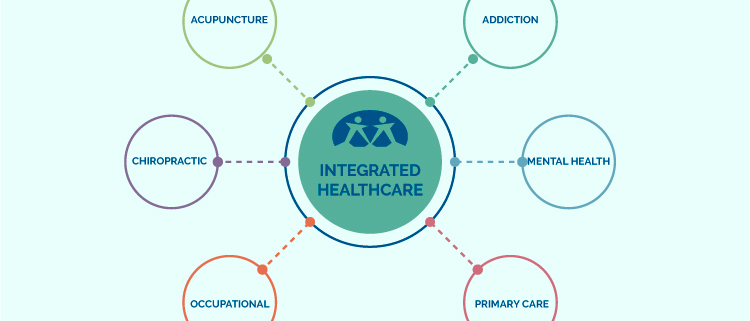How Healthcare Marketplaces Are Shaping the Future of Telemedicine in 2024

How Healthcare Marketplaces Are Shaping the Future of Telemedicine in 2024. The world of healthcare has been evolving at an unprecedented pace, and one of the most significant shifts in recent years is the rise of telemedicine. Fueled by technological advancements and the growing need for accessible healthcare, telemedicine has become a vital part of the healthcare system. But what’s truly accelerating the adoption and expansion of telemedicine? The answer lies in healthcare marketplaces—innovative digital platforms that connect patients with providers and streamline access to care. In 2024, these marketplaces are not just shaping the future of telemedicine—they’re transforming how we think about and access healthcare.
Let’s dive into how healthcare marketplaces are driving the future of telemedicine and what this means for patients, providers, and the industry as a whole.
The Role of Healthcare Marketplaces in Telemedicine
At their core, healthcare marketplaces are online platforms that allow patients to search for, compare, and connect with healthcare providers—from general practitioners to specialists—based on their needs. These marketplaces offer a wide range of services, from in-person appointments to virtual consultations, making it easier for patients to access care quickly and conveniently. With telemedicine, these platforms are enabling seamless access to medical services without the need to visit a physical clinic.
Healthcare marketplaces are shaping telemedicine by offering the following:
1. Increased Accessibility

One of the greatest challenges in healthcare, even before the pandemic, was accessibility. Patients in rural areas, people with mobility issues, or those with busy schedules often faced barriers to accessing quality healthcare. Healthcare marketplaces are breaking down these barriers by offering telemedicine as a primary or complementary service.
Patients can easily find doctors or specialists who offer virtual consultations, allowing them to access care from the comfort of their homes. This accessibility is especially crucial in 2024, when many people continue to prefer remote healthcare options, whether it’s for routine check-ups, mental health therapy, or even follow-up care after surgery.
By offering telemedicine services through digital platforms, healthcare marketplaces ensure that high-quality care is just a click away, no matter where you are.
2. Streamlined Patient Experience

Before the rise of healthcare marketplaces, booking a telemedicine appointment could be a cumbersome process, involving multiple phone calls, waiting times, and complicated systems for insurance verification. Healthcare marketplaces have simplified this experience by consolidating everything into one platform. Patients can search for providers, check their availability, book an appointment, and make payments all in one place. (Read More : Holistic Wellness Hiking Retreats: Balancing Fitness and Mindfulness on the Trails).
Many marketplaces also offer AI-powered recommendations, which suggest the most suitable healthcare provider based on patient preferences, medical history, and insurance coverage. This makes finding the right telemedicine professional fast and hassle-free. Additionally, these platforms allow for easy access to medical records, prescriptions, and test results—all stored digitally and available for quick reference.
The seamless nature of healthcare marketplaces is revolutionizing the way patients interact with the healthcare system, making telemedicine not only convenient but also a more integrated part of the overall care journey.
3. Cost Transparency and Affordability

Healthcare costs have long been a point of concern for patients, and telemedicine was initially seen as a more affordable option. In 2024, healthcare marketplaces are enhancing this affordability by offering clear pricing and transparent billing practices. Many platforms show the costs of virtual consultations upfront, allowing patients to understand exactly what they’re paying for without any surprises.
This transparency is vital for patients trying to navigate the often complex world of insurance and healthcare payments. Some healthcare marketplaces even offer subscription-based services, where users pay a monthly fee for unlimited virtual consultations, making healthcare more predictable and affordable.
Additionally, these platforms often work with a wide range of providers, offering everything from free initial consultations to budget-friendly options for those without insurance. This helps democratize access to telemedicine, ensuring that more people can benefit from remote care. (Read More : The Best Free Fitness Apps iPhone: Get in Shape Without Breaking the Bank In 2024).
4. Expanded Provider Networks
Telemedicine has removed the geographic barriers that once limited access to specialists. Healthcare marketplaces are taking advantage of this by creating expansive networks of telemedicine providers. Patients no longer have to settle for a limited list of local doctors or specialists; instead, they can access the best providers from anywhere in the world. (Read More : The Impact of Social Media on Mental Health: Balancing Connection and Well-being in 2024).
In 2024, many marketplaces offer access to a broad range of specialists, from mental health professionals to dermatologists, endocrinologists, and even holistic care providers—all available via telemedicine. This access to a diverse group of experts is helping to improve patient outcomes by ensuring they can find the right provider for their specific needs.
Furthermore, these marketplaces often feature reviews and ratings from other patients, allowing individuals to make informed choices about their healthcare providers. This level of transparency and choice encourages competition among providers and improves the quality of care across the board.
5. Integration with Other Health Services

Telemedicine is just one part of the broader healthcare ecosystem, and healthcare marketplaces are increasingly integrating telehealth with other healthcare services. For instance, patients using a marketplace to book a virtual consultation may also be able to access lab tests, pharmacy services, or follow-up care within the same platform. Some marketplaces even offer services like wellness programs, tele-nutrition consultations, and fitness coaching, expanding the reach of preventive care.
This level of integration is reshaping how we think about healthcare. It’s no longer just about treating illness but managing overall well-being. These marketplaces are encouraging a more holistic approach to healthcare, where telemedicine is seamlessly integrated with other aspects of health, making it easier for patients to take control of their care in a comprehensive way.
The Future of Telemedicine: What’s Next?
As we move further into 2024 and beyond, healthcare marketplaces will continue to play a crucial role in the evolution of telemedicine. Here are some trends we can expect to see in the coming years:
- Increased Use of AI and Machine Learning: Healthcare marketplaces are likely to incorporate even more AI-driven tools to assist with diagnostics, treatment recommendations, and patient care. These tools will enhance the accuracy of virtual consultations and help providers offer more personalized treatment plans.
- More Specialized Telemedicine Services: In the future, we can expect to see a broader range of telemedicine services offered through these platforms. Specialized care—such as virtual physical therapy, remote patient monitoring, and chronic disease management—will become more prevalent, allowing for more comprehensive care.
- Stronger Interoperability Between Platforms: As telemedicine becomes more mainstream, we may see improved integration between healthcare marketplaces and other healthcare systems, making it easier for patients to access their medical records, prescriptions, and test results, regardless of which platform they use.
- Global Access to Care: As more healthcare providers sign up for telemedicine marketplaces, patients will gain access to care from top doctors and specialists worldwide. This will further increase the global reach of telemedicine and make world-class care accessible to anyone with an internet connection.
Conclusion article How Healthcare Marketplaces Are Shaping the Future of Telemedicine in 2024
In 2024, healthcare marketplaces are not only shaping the future of telemedicine—they’re revolutionizing the way we access and experience healthcare. By offering greater accessibility, streamlined services, and a more personalized experience, these platforms are making healthcare more convenient, affordable, and effective for everyone. As telemedicine continues to evolve, healthcare marketplaces will remain at the forefront, transforming how patients receive care and ensuring that healthcare is more patient-centered than ever before.






1 thought on “How Healthcare Marketplaces Are Shaping the Future of Telemedicine in 2024”
Comments are closed.